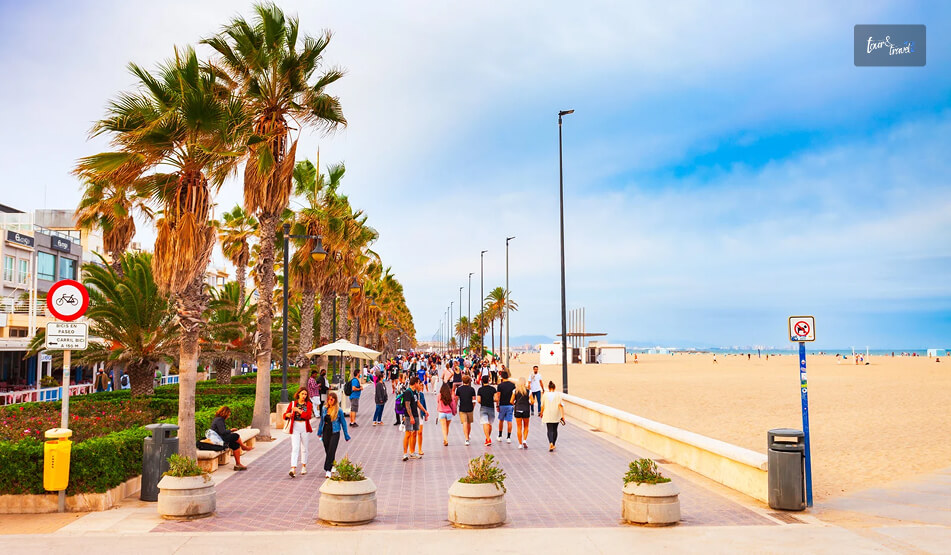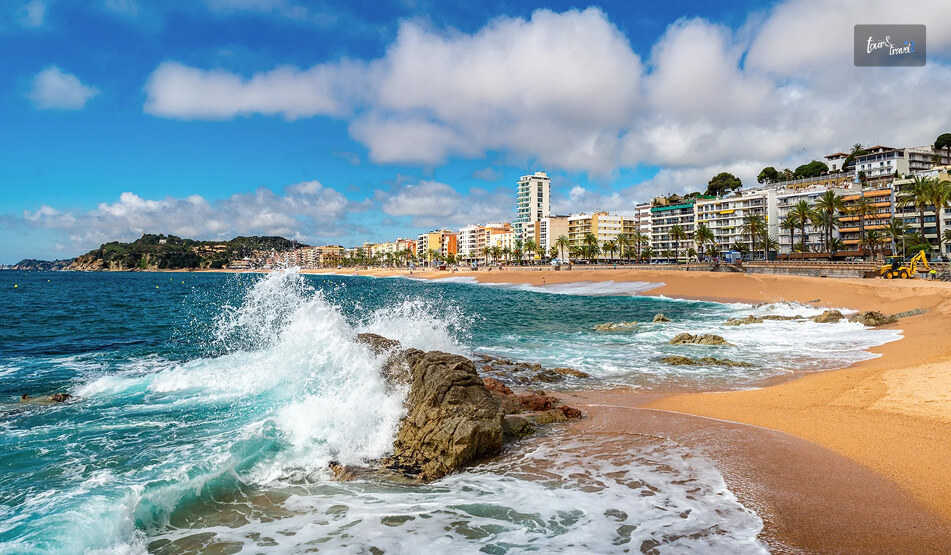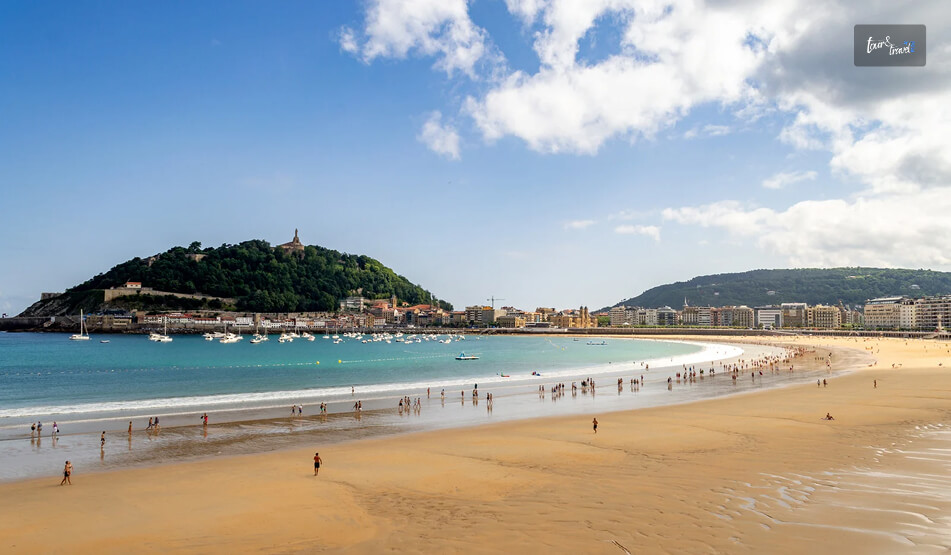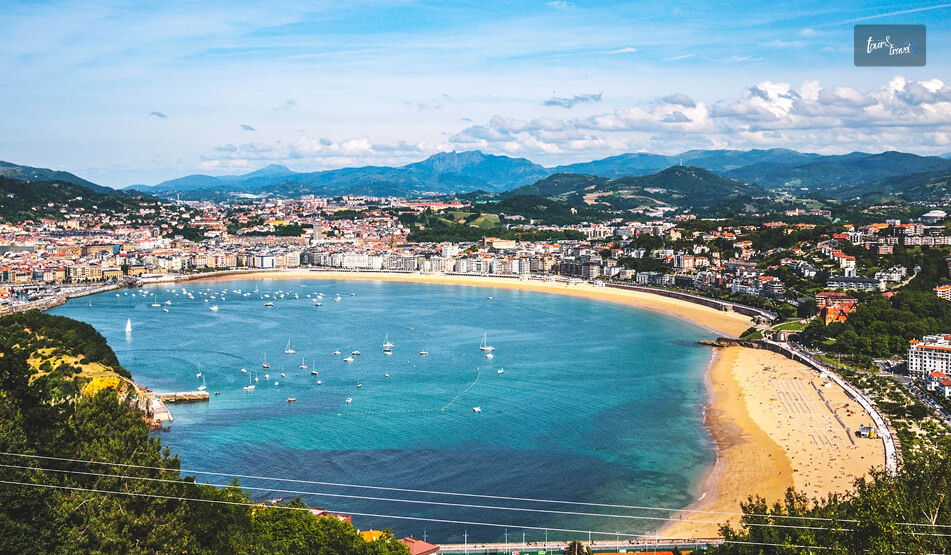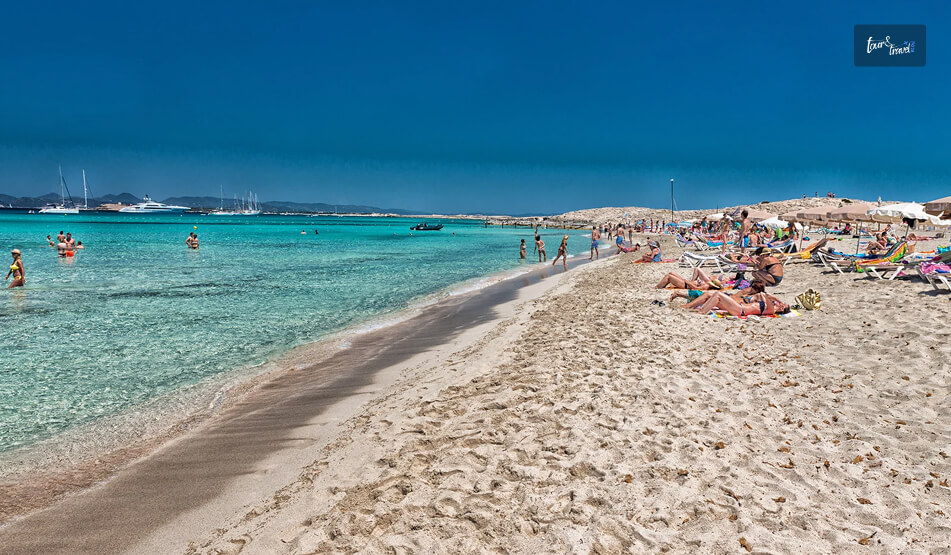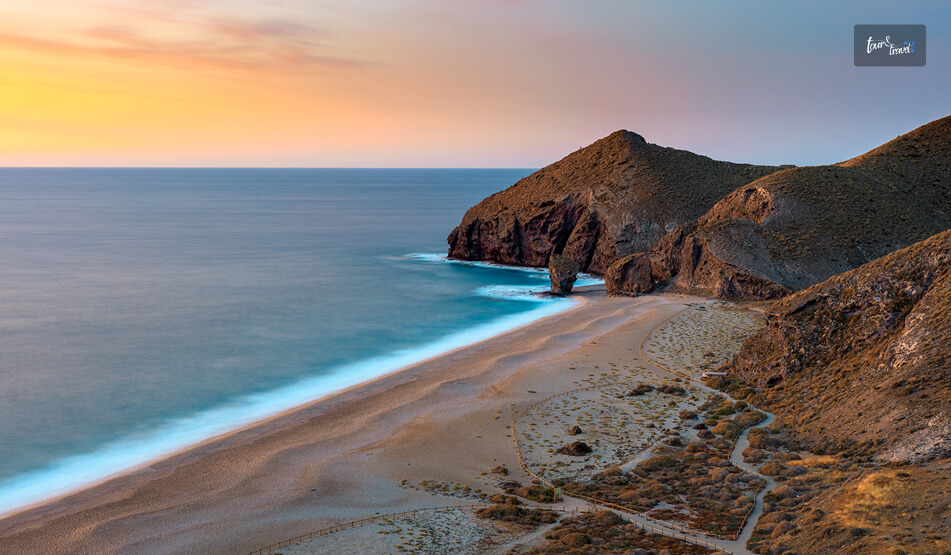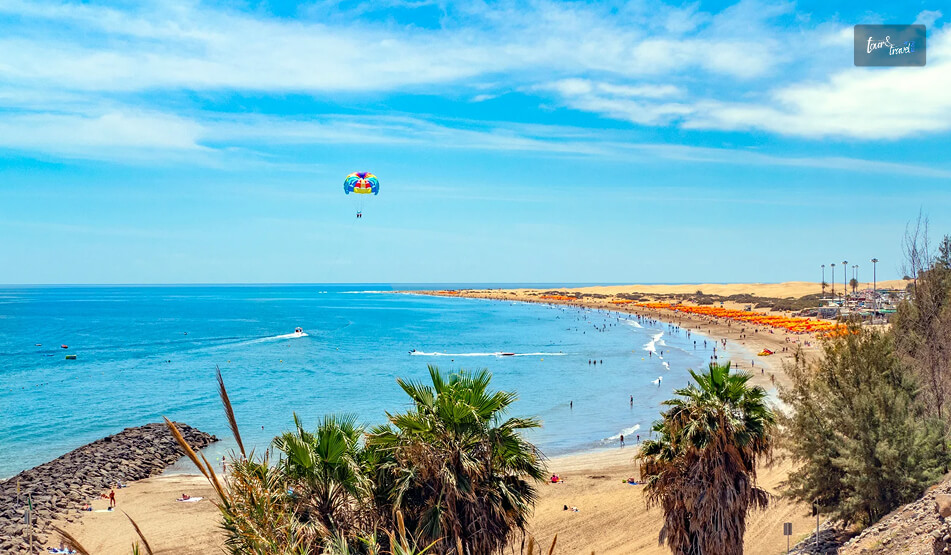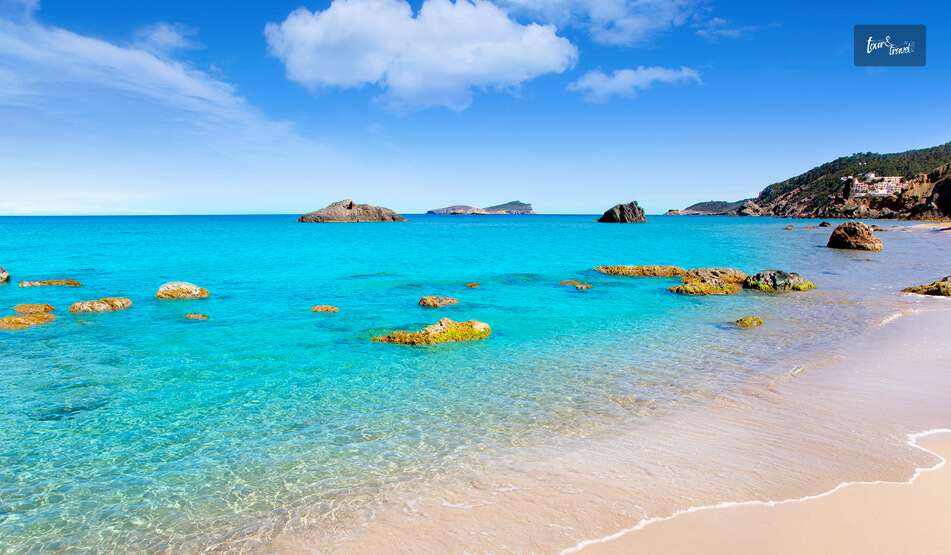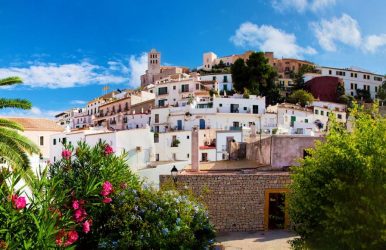What Is Ibiza Spain Famous For? Why Is Ibiza Famous For Luxury Travel?
BY Sibashree Aug 19, 2025
What made Ibiza famous? Well, it is a well-known hotspot for celebrity tourism. From my favorite Leonardo DiCaprio and Cristiano Ronaldo to David Guetta and Neymar Jr.! It’s a star-struck affair in Ibiza. And A-listers such as Conor McGregor and Ed Sheeran gather at the clubs here for good times! Further, the luxury yacht experience in Ibiza is matchless. So, it’s no wonder that Ibiza welcomed a record number of international tourists in 2024. However, 2025, so far, has not been good for tourism in Ibiza. This island in the Mediterranean Sea has recently been struggling with overtourism. So, the air on the island is heavy with protests from angry locals and no-entry markings on popular destinations such as “Es Vedrà Viewpoint.” The Times of London has covered this situation, understanding the gravity, and El Diario, a local news outlet, has also quoted a municipal source as saying, “Those who cannot park their cars in the parking lot provided by the City Council will have to leave without a photo of es Vedrà or return another day." Now, despite all these challenges, the “Perfect Party Paradise in Spain” has not lost its charm. Furthermore, the luxury accommodations on the island, including the luxury villas Ibiza Le Collectionist, make it a favorite destination for high-net-worth travelers. In this Tour and Travel Blog, we will discuss why is Ibiza famous for, its cultural attractions, vibrant nightlife, safety standards, and every other thing you need to know. Where Is Ibiza Located? What Country Is Ibiza In? Ibiza is located in the Balearic Sea. The Balearic Sea is a part of the stunning Mediterranean Sea, and it functions as a separator between the Spanish mainland and the Balearic Islands. This island is also close to the Iberian Peninsula, which is located 79 kilometers west. Furthermore, this Balearic Island is an autonomous region of Spain. In the Catalan language, it is called Eivissa. What Is Ibiza Spain Famous For? It’s unfair to label Ibiza as just a party hotspot. The tourism profile of the island is as diverse as it can be. Furthermore, with a land area of 571.6 km², Ibiza is a UNESCO World Heritage Site, inscribed in 1999. About the biodiversity and cultural richness of Ibiza, the UNESCO World Heritage Convention says, “Ibiza, Biodiversity and Culture, is a serial, mixed natural and cultural World Heritage property bringing together exceptional archaeological and historic sites on the islands of Ibiza, adjacent to a marine reserve of global importance.” However, it is not just the designation of the UNESCO World Heritage Site that makes Ibiza famous. We love Dalt Vila or Upper Town, the Sa Caleta Settlement, and the Punic necropolis at Puig des Molins. Still, we love Ibiza more for the following reasons. 1. The Perfect Mediterranean Climate And Easy Accessibility Ibiza is in the Mediterranean Sea, and it has the Ibiza Airport (IBZ). Ibiza Airport (IBZ) is well-connected to major European cities by air. Furthermore, you will get ferries from the Spanish Mainland, especially cities such as Denia, Valencia, and Barcelona. Moreover, you can visit Ibiza from other Balearic Islands such as Formentera and Mallorca by taking a ferry. This easy connectivity makes Ibiza a perfect tourism destination. On the other hand, thanks to its geographical location in the Mediterranean Sea, Ibiza has a warm and dry summer and a mild winter. Moreover, it is ideal for outdoor attractions throughout the year, and you will love the beaches. 2. The Most Happening Nightlife And A Free Spirit You will love the happening nightlife of Ibiza. The world-renowned venues here include: Amnesia DC10 Pacha Also, many internationally acclaimed DJs regularly play at the clubs here. Furthermore, a Bohemian vibe and an artistic scene with local artists and hippie markets contribute to the overall ambiance of Ibiza. 3. Diverse Tourism Profiles As I have mentioned earlier, it’s not just the party scene when we discuss “Why is Ibiza famous for?” You cannot overlook the cultural encounters in the quaint towns, the natural beauty, and the resorts for families. I will share a detailed account of the cultural attractions in Ibiza shortly. 4. A Happening Musical Scene Ibiza and its nightclubs have been the wind beneath the wings of electronic dance music, or EDM. Let’s go back to the late 80s or early 90s when clubs like Space, Amnesia, and Pacha started having international DJs. Also, these clubs were the epicenters for growing a global community of music lovers. 5. Historical Roots The modern and carefree spirit of Ibiza is mostly shaped by the remarkable hippie movement of the 1960s and 1970s. Many markets and communities grew around this culture, and these are important tourist attractions in Ibiza. 6. Modern Reputation Of Ibiza Hedonistic! That’s probably the right word for describing the modern reputation of Ibiza. All these have been the allure of Ibiza for the longest time, and it continues to be so! Nightclubs Tob DJ Music Family-Friendly Resorts Wellness Retreats Great Dining Why Is Ibiza Called The "White Isle"? Now, there are some debates about how and why Ibiza got its name as the White Isle. Many say that Santiago Rusiñol, a Spanish artist, gave Ibiza this name. I could not find many references to the fact, except for the mention of an article in the Diario de Ibiza newspaper. He visited the island in 1912 and named it La Isla Blanca or the White Island. There is another version that the name “White Isle” became a tourism slogan for Ibiza in the 1940s. Also, while figuring out why Ibiza is called the White Isle, I came across two versions. The most obvious is the abundance of whitewashed buildings, including country houses and fincas in Ibiza. The cube-like structures of the buildings and thick white walls earned the island this name. The other explanation is based more on the vibe. Freedom and Bohemianism are the core essence of the island, and probably the island is named after them. Why Do Celebrities Go To Ibiza? Ibiza is in the news again! And this time it is about a luxurious five-bedroom mansion. It has been the home to the stars of the CELEBS Go Dating show this time. Olivia Hawkins, Jon Lee, Christine McGuinness, and Kerry Katona are some prominent names taking refuge in this luxury villa. Now, it is not just about this celebrity love-finding show. Ibiza has been a favorite destination for renowned soccer players, movie stars, and other known faces. In fact, movies such as “Amnesia” and “White Lines” have been shot here. But why? Of course, being a UNESCO World Heritage Site and blessed with the quintessential Mediterranean beauty, Ibiza is a global tourism attraction. We love its beaches, cliffs, food, and the free spirit. And the nightlife! However, from an analytical POV, I think it is the privacy and the exclusivity of the eclectic culture here are the main reasons why celebrities love Ibiza. Let’s be honest, Ibiza is a dream destination in a literal sense, and it’s for the famous and rich. The allure is also so much that names such as Pepe Reina, Xavi Hernández, and Iker Casillas have invested in various properties in Ibiza. Also, do you want to spot celebs in Ibiza in the summer season? Why don’t you visit Ses Salines, Cala Jondal, and other beaches of Ibiza? You can even take a short boat ride to Formentera. It has beautiful sandy beaches and tranquil water. And trust your luck for catching a glimpse of Naomi Campbell and Paul McCartney. What's So Special About Ibiza Nightlife? If you want to explore the legendary nightlife of Ibiza, you will have to plan a trip between May and October. These are the months when the nightclubs in Ibiza are packed with events. I have already mentioned the famous nightclubs such as Amnesia, Pacha, Hï, DC10, and Ushuaïa. And guess the names of the DJs playing at these places! Calvin Harris, Black Coffee, Carl Cox! Moreover, the party scene in Ibiza is almost non-stop. You don’t have to wait for the Sun to go down. You can even enjoy daytime boat parties and pre-sunset parties. Also, irrespective of your favorite music genre, you can enjoy mainstream pop music, EDM, and house music at the famous clubs. Why Is Ibiza So Popular With Tourists? Other Things To Do In Ibiza Along with partying, Ibiza is famous for its beautiful beaches and small coves. Further, Ibiza is ideal for watersports and cultural tours. Here are more things to do in Ibiza. 1. The Beaches And Coastal Fun You will love the beaches or playas in Ibiza. The most famous and longest beach on the island is Playa d’en Bossa. Furthermore, you can visit the coves (calas) such as Cala Salada, a popular snorkeling hotspot, and Cala Comte, a favorite sunset point. 2. Watersports And Diverse Outdoor Activities Boat rides, especially to Formentera, are a magical experience if you are in Ibiza. Also, you can explore the hidden coves. Furthermore, you can try scuba diving at Cala d’Hort and enjoy hiking through the coastal cliffs. 3. Watching Sunset You cannot say goodbye to Ibiza without seeing its iconic sunset views. Café Mambo in San Antonio is a lovely place for sunset views. Also, Es Vedrà viewpoint is an iconic viewpoint. However, I am not sure about the accessibility there, considering the overtourism problems. 4. Diverse Family-Friendly Activities Ibiza is also a family-friendly destination with beach clubs here having facilities for supervised kids’ activities and play areas. Furthermore, the charming villages, inlets, and historical sites of Dalt Vila are major attractions in Ibiza. If nothing, you can relax at Cala Llonga and Portinatx. Why Is Ibiza Famous For Luxury Travel? As Ibiza Continues To Attract The Ultra-Rich White sands! Crystal clear waters! An amazing coastline! All these make Ibiza a destination for superyacht tourism. Furthermore, this Mediterranean escape is all about exclusive luxury! Here is more to it! Ibiza sits in the same row as the super-luxurious Mediterranean destinations such as Saint-Tropez and Capri. Despite facing the curse of overtourism, Ibiza has managed to earn a revenue of €825 million in 2024, according to a study by the Balearic Islands Statistics Institute. But what are the factors that make Ibiza so popular for luxury tourism? Along with the privacy and exclusivity, it is the infrastructure updates for high-net-worth individuals. The resorts and luxury villas with premium suites, and tailored experiences such as farm-to-table dining, wellness retreats, and concierge services have been the driving factors for Ibiza having a luxury tourism boom and almost abandoning the mid-range market for travelers. Moreover, its accessibility for European travelers and satisfactory safety conditions make it a favorite destination for luxury tourism. In an interaction with Luxury Tribune, Victor Van den Driessche, the general manager of Prestige Properties Ibiza, said, “Ibiza is unique, with its international vibe, stunning scenery, proximity to European capitals, and safety.” What Cultural Attractions Is Ibiza Famous For? Cobblestone streets and historical fortifications set the cultural mood of Ibiza, especially in Dalt Vila of Ibiza Town. Furthermore, with Catedral de Santa María or The Cathedral of Our Lady of the Snows being the main attraction, you will also love exploring the watchtowers and medieval statues. Also, religious festivals, Ibicenco clothing, and folklore are very much a part of Ibiza’s cultural landscape even today. However, the Hippie movements in the 1960s and 1970s emerged as a counter culture in Ibiza. Punta Arabí, one of the largest markets, famous for its global cuisine and live music, and Las Dalias, with the best collections of art, clothes, and jewelry, are other prominent cultural attractions of Ibiza. A Trip To Remember To Ibiza: Practical Tips To Remember Best Time to Visit: June to August and May to September Transportation Options: Buses (May not be available in odd hours) and Primarily Car Rentals Best Localities to Stay: Ibiza Town, Playa d’en Bossa, Santa Eulalia, and San Antonio Is Ibiza Safe For Tourists? Is It Worth It? Yes, Ibiza is safe for tourists, even for women solo travelers. However, petty crimes such as snatching and pickpocketing are common in Ibiza. Furthermore, demonstrations and strikes are common in Ibiza these days, especially when it is dealing with the perils of overtourism. So, there can be disruptions in the transportation system. So, despite Ibiza being the most beautiful place in Spain, and a hell of a luxury tourist destination, you must take the safety warnings and restrictions by local authorities seriously. What Is Ibiza Famous For: Frequently Asked Questions (FAQs) Here are frequently asked questions and answers about why is Ibiza famous for. What Music Is Ibiza Famous For? Ibiza is the global tourism hotspot for electronic dance music, or EDM. However, various other genres of music, such as House music and Techno, are popular in Ibiza. Furthermore, the eclectic Balearic beat, which started in the mid-80s, is a beautiful expression of the culture of Ibiza. Trance, reggae, and hip-hop are other popular music genres in Ibiza. Are There Famous Beaches In Ibiza? Yes, Ibiza has many famous beaches. For example, Cala Bassa has amazing beach clubs and white sands. Other popular beaches here are:• Cala Saladeta• Cala Salada• Las Salinas• Cala d'Hort• Cala Comte Is Ibiza Expensive To Visit? Yes, Ibiza is an expensive destination to visit. It has high-end accommodations and globally acclaimed nightclubs. On average, an Ibiza trip for 7 days will cost you at least $20000 per person. What Is Ibiza Famous For Food? Ibiza celebrates its Spanish roots and the Balearic traditions through its food. The first dish you must try here is the Bullit and guisat de peix, or an Ibiza special fish stew. Sofrit pagès made of different types of meat, such as chicken and lamb, tastes amazing with a prominent hint of cinnamon, saffron, paprika, and cloves.Greixonera or the Ibizian pudding, Flaó or Ibiza’s cheesecakes, and Frita de pulpo or fried octopus are the famous cuisines of Ibiza.

